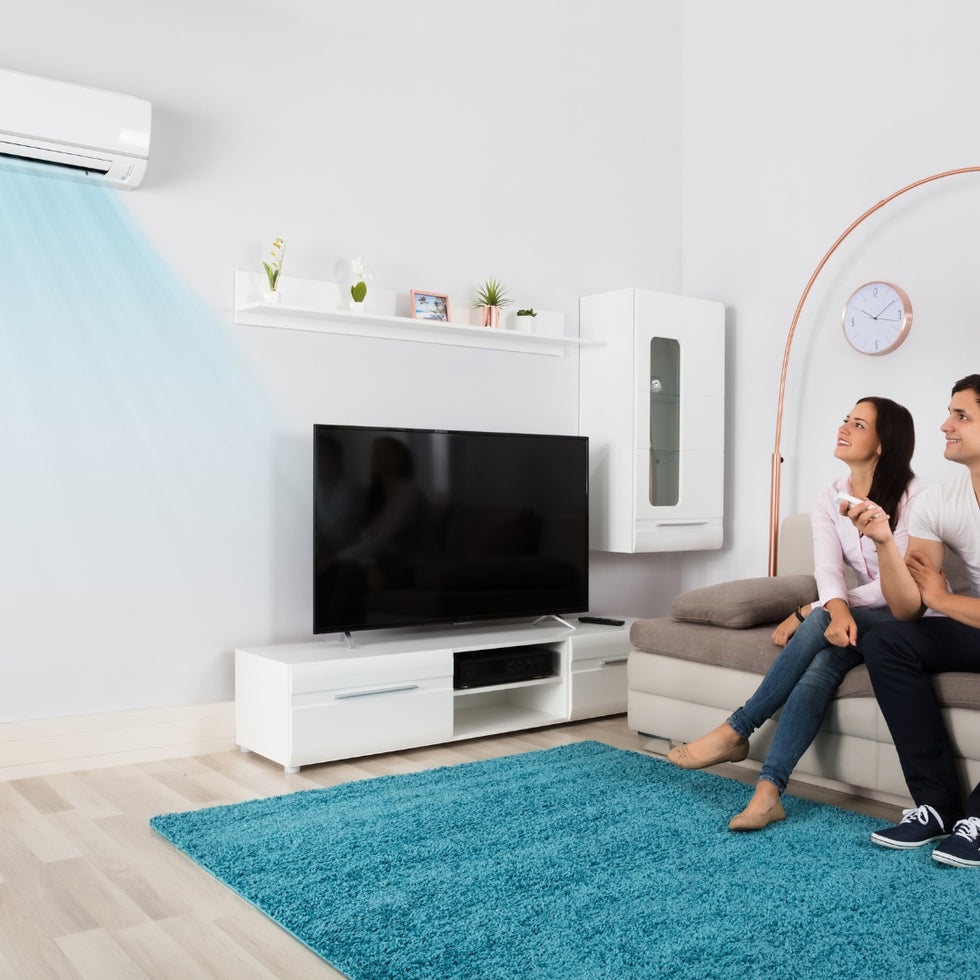Why Homeowners Are Installing Air Conditioning
Many customers start out thinking a system around £500–£600 is all they’ll need, and then discover installation costs and pause the idea. But it’s worth seeing the bigger picture.
A high-quality installed system is an investment in your comfort, your home’s efficiency, and its value. Modern air conditioning not only cools in summer but also heats efficiently in winter - letting you control the temperature in one room without wasting energy on the whole house.
How Much Does Installation Cost?
We know price is the biggest question homeowners have so let’s keep it transparent. To help you budget with confidence, here’s what typical installation pricing looks like for a standard wall-mounted system:
💡 Tip: Today’s systems are classed as heat pumps, which means they’re designed to both heat and cool efficiently - saving money long-term while keeping you comfortable all year.
All installations include F-Gas certified engineers, a 12-month CoolEasy installation warranty, and access to onsite warranty options.
Note: Installations inside the M25 or in remote areas may cost more, and additional pipework or height differences can affect price.
Need help selecting the correct air conditioning size / power?
Spread the Cost with Shop Pay
We understand that comfort should be accessible. With Shop Pay, you can now spread the cost of your new air conditioning system over three months interest-free.
That means you can enjoy an efficient, quiet, installed system today while managing payments in smaller steps.

Not Ready for a Full Installation?
If a fitted system isn’t right for you yet, try a portable air conditioner first.
They’re plug-and-play, require no engineer, and start from under £300, a great way to test what works best for your home before upgrading.
Installed by Experts You Can Trust
CoolEasy partners with a nationwide network of F-Gas registered installers covering England, Wales and Scotland. Whether we complete the install ourselves or refer you to a trusted engineer, you’ll receive the same high standards and friendly support.
An Upgrade That Pays Off
Beyond comfort, installing air conditioning increases your property’s value and appeal. Buyers and renters are increasingly looking for energy-efficient homes that can handle rising summer temperatures.
When you’re ready to take the next step, we’ll guide you through every stage — from product choice to survey and installation.
Get a Quick Quote Today
FAQs Installation
How much does home air conditioning installation cost?
How much does home air conditioning installation cost?
Most installations start from £595, but total costs depend on system size, location, and access. You can expect to pay around £1,300–£2,000 including supply and fitting.
Can I use air conditioning for heating?
Can I use air conditioning for heating?
Yes. All modern systems function as heat pumps, providing efficient heating as well as cooling.
Do I need an F-Gas installer?
Do I need an F-Gas installer?
Yes — all refrigerant systems must be installed by a certified F-Gas engineer, ensuring safety and compliance.
How long does a domestic installation take?
How long does a domestic installation take?
Most single-room systems are installed in one day with minimal disruption.
Can I install air conditioning myself?
Can I install air conditioning myself?
Only Easy-Fit or DIY systems can be installed without an engineer. All others legally require F-Gas certification.
Do you offer servicing or maintenance?
Do you offer servicing or maintenance?
Yes. Annual servicing keeps your system efficient and maintains warranty cover. Visit our Servicing & Maintenance page for details.





